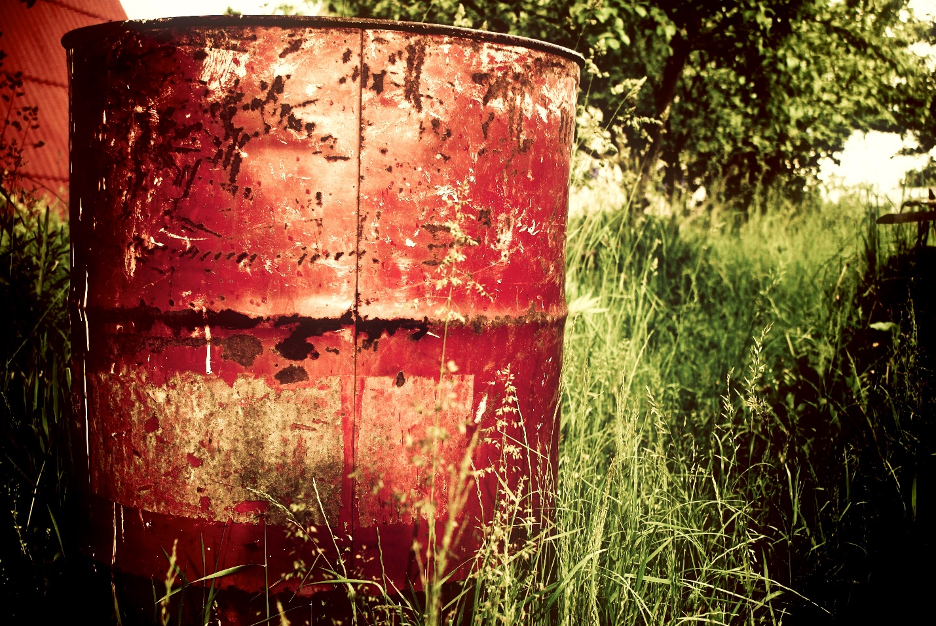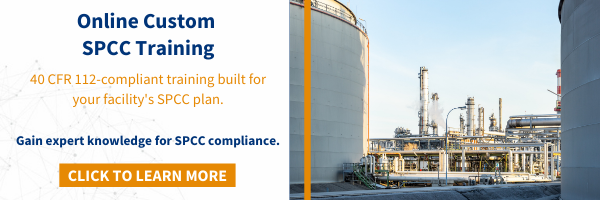Maintaining environmental compliance during the COVID-19 pandemic can be challenging for your facility and operations. Often, with only essential staff on-site, regular monthly inspections are left undone. Now, with many businesses re-opening, it is important to get back on track with your environmental compliance.
If you are subject to 40 CFR 112 (meaning you store more than 1,320 gallons of oil and maintain a Spill Prevention, Control, and Countermeasure (SPCC) plan), failure to comply can cost you tens of thousands of dollars per violation per day in federal fines from the Environmental Protection Agency (EPA). According to an EHS Daily Advisor article, the following 12 SPCC violations are the most common at all inspected facilities. Read through this list, along with our explanations, and evaluate how your company’s SPCC plan matches up.
12 Common SPCC Violations
- Container incompatibility: Do you use underground storage tanks as aboveground storage tanks? Do you use heating oil tanks to store gasoline? This could be a serious violation during an EPA inspection.
- Containment drain valves left open: Did you know that this may also constitute a NPDES (National Pollutant Discharge Elimination System) Stormwater Permit violation from your state enforcement authority?
- Poor integrity of tanks: Do you have inspection records indicating this deficiency if it exists? Have you inspected your tanks according to your SPCC plan schedule?
- Inoperative or no overfill device(s) and/or no inspection of the device(s): Have you tested these devices? Are they installed? Is there a procedure for testing?
- Failure to address facility tanker trucks/refuelers in the SPCC plan: Are you including these in your plan, and does your facility have a documented procedure to prevent or react to releases from this equipment?
- Small containers located in buildings that don’t have proper secondary containment: Have you assessed the containment requirements for each container and determined the potential spill pathways? A building might provide the required containment, but it also might not.
- Improper maintenance and inspection of containment structures: Have you seen accumulated liquid in outdoor structures after a rain? If not, where did it go?
- Poor piping support: Have you monitored the transfer systems and required inspections?
- Buried piping after August 16, 2002, that has not complied with cathodic protection requirements: Are you losing materials, but no visible leak is evident? Do you have records of cathodic protection inspections?
- Poor double-wall piping: Does your piping need to be double walled? Is the design conducive to detecting leaks?
- Poor drainage in buildings: Do you have a tank that is always sitting in standing water because you have a roof leak or it is in the basement?
- Not permanently closing containers: Are you keeping a tank in service because you might need it? If so, are you inspecting it and maintaining it as required? Permanently closing containers also has an SPCC definition, so do you follow those requirements?
As you read through these questions for common SPCC violations, how do your facility’s compliance program and SPCC plan fare? Tetra-Tech can develop facility-specific compliance programs that will help you meet your regulatory burden. Contact us at [email protected] for support.
We also have an online customizable SPCC training course that can equip your compliance team with the expertise needed for a strong compliance program. SPCC violations can cost your organization significantly, so make sure your team is equipped to meet your regulatory obligations.







